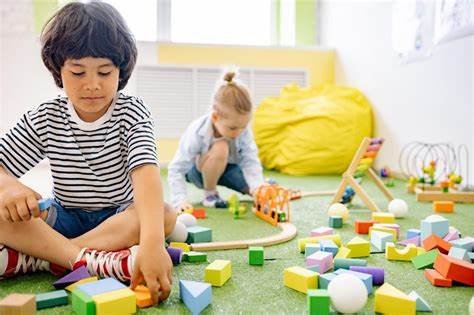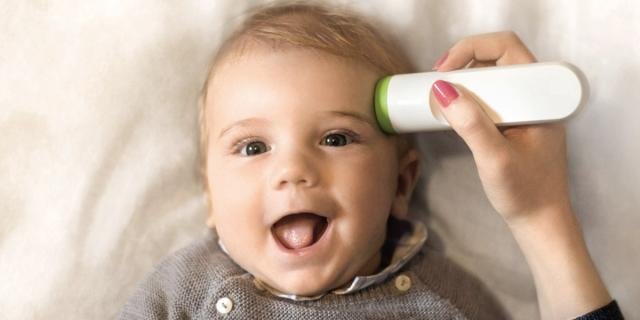As a parent, creating a play space for your baby is an exciting yet important task. Babies spend a large portion of their early years exploring and learning through play, and having a safe, stimulating environment can promote healthy development. Whether you’re designing a dedicated playroom or a simple corner in your home, it’s essential to ensure that the space encourages exploration, creativity, and cognitive growth, while also being safe and comfortable.
Here are practical steps to create a safe and stimulating play space for your baby:
1. Choose a Safe Location
First and foremost, you’ll want to choose a location that’s safe for your baby to play. This might be a corner of your living room, a designated nursery, or a playroom. Make sure the area is free from hazards such as sharp furniture edges, small objects that could pose choking risks, or electrical outlets that your baby might reach. You may need to baby-proof the space by using outlet covers, corner protectors, and safety gates to keep your little one safe.
2. Incorporate Sensory-Stimulating Elements
Babies develop their senses through touch, sight, sound, and movement. Incorporating sensory-stimulating elements into their play space can encourage cognitive and physical development.
- Tactile: Include soft rugs, textured toys, or sensory boards that your baby can touch and explore. Soft fabrics like cotton or fleece are comfortable for babies and offer them a range of textures to explore.
- Visual: Bright colors, interesting patterns, and toys with contrasting colors can captivate your baby’s attention. You can also use wall decals or mobiles that hang above the crib or play area.
- Auditory: Musical toys, rattles, and objects that make sound can engage your baby’s hearing and help with auditory development. Keep the volume low to prevent overstimulation.
- Movement: Babies need room to move, especially as they begin to roll over, crawl, and eventually walk. Ensure the space is large enough for them to move freely.

3. Opt for Safe and Baby-Friendly Furniture
Furniture in the play area should be safe and functional. Soft play mats or foam tiles are an excellent choice for babies, offering both comfort and protection as they roll and crawl around. If your baby is not yet sitting up, a playpen or small gated area can provide a secure space for exploration.
For storage, opt for low shelves or baskets where you can store toys, books, and other baby essentials. Make sure any furniture is sturdy and free of sharp edges or small parts that could be a choking hazard.
4. Provide Age-Appropriate Toys and Activities
Select toys that align with your baby’s developmental stage. Babies learn through play, and age-appropriate toys encourage exploration and skill development.
- For newborns: Look for high-contrast toys or black-and-white items to capture their attention. Rattles, soft plush toys, and mirrors are perfect for stimulating their senses.
- For older babies: As babies start to crawl or sit up, they enjoy interactive toys like stacking blocks, soft balls, or textured books. Items that encourage hand-eye coordination, like shape sorters and activity centers, are excellent choices.
Rotate the toys to keep the play space interesting and new. This not only keeps your baby engaged but also helps in cognitive development as they learn to interact with different textures, shapes, and colors.
5. Create a Cozy Nook for Rest and Quiet Time
While stimulating activities are crucial, babies also need time to relax and rest. Creating a cozy nook within the play space for napping or quiet play helps your baby balance stimulation with rest.
A soft, comfortable rug or blanket, a few plush toys, or a calming mobile can create a peaceful environment where your baby can wind down. This is especially helpful as your baby grows older and may need quiet time to process the day’s experiences.
6. Keep It Clean and Organized
A clean play space is crucial for your baby’s health and safety. Ensure that all toys and play materials are regularly cleaned and sanitized, especially those that your baby will put in their mouth. Use baby-friendly cleaning supplies that are non-toxic and safe for children.
Keep the area organized so that it’s easy for you to find the toys your baby needs and helps in reducing clutter. Store the toys in baskets, bins, or drawers to keep the space tidy.
7. Include Natural Elements
Incorporating natural elements into your baby’s play area can create a calming and balanced environment. Add plants that are safe for babies or natural wooden toys that are free of harmful chemicals. The presence of greenery or wooden textures promotes a soothing atmosphere and can enhance your baby’s sensory experiences.
8. Make it Interactive for Parents
Remember, babies need to interact with their caregivers to thrive. Make sure that the play space allows for interaction between you and your baby. Whether it’s sitting on the floor with them to play or lying next to them as they explore their surroundings, your presence is essential. The best play spaces promote bonding and connection.
Conclusion
Creating a safe and stimulating play space for your baby is not only about fun but also about fostering growth and development. By choosing the right location, incorporating sensory elements, using safe furniture, and providing age-appropriate toys, you can create a play area that encourages exploration, learning, and creativity. Keep the space clean, organized, and nurturing, and remember to involve your baby in interactive play for the best developmental outcomes. Your baby’s play space will be an essential part of their early years, supporting them as they explore the world around them and develop important skills.










